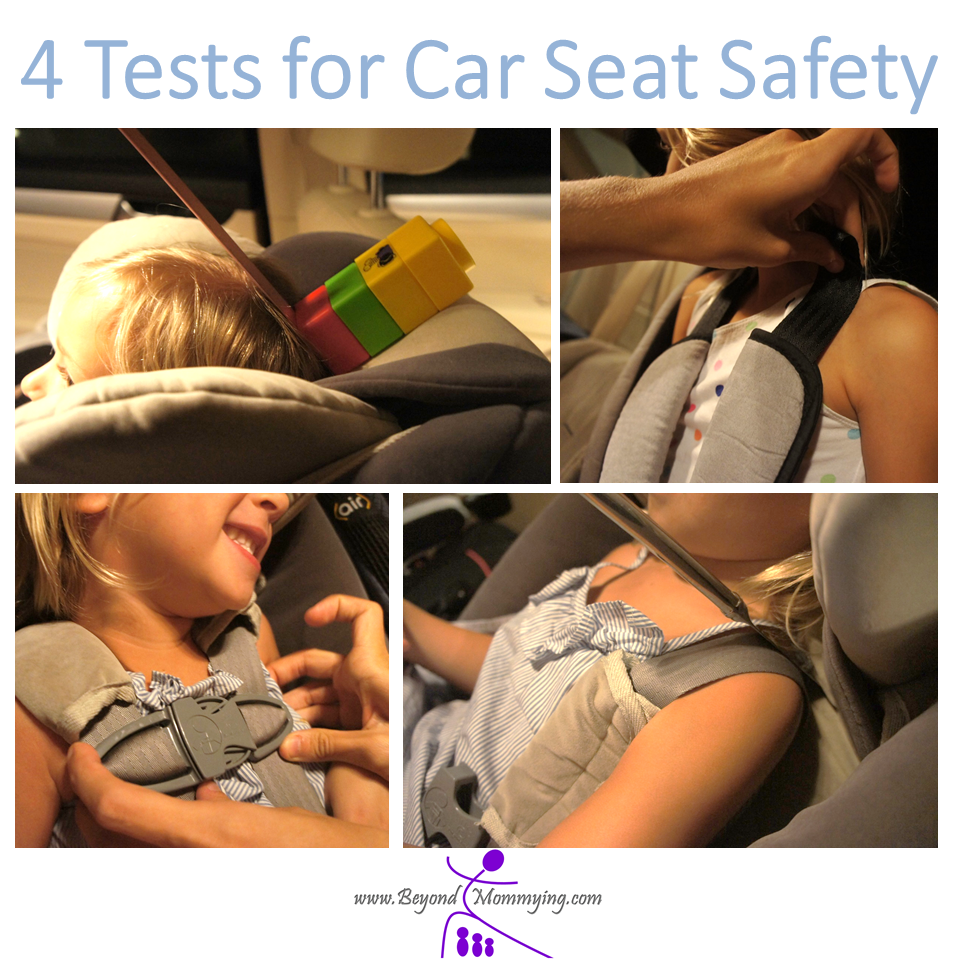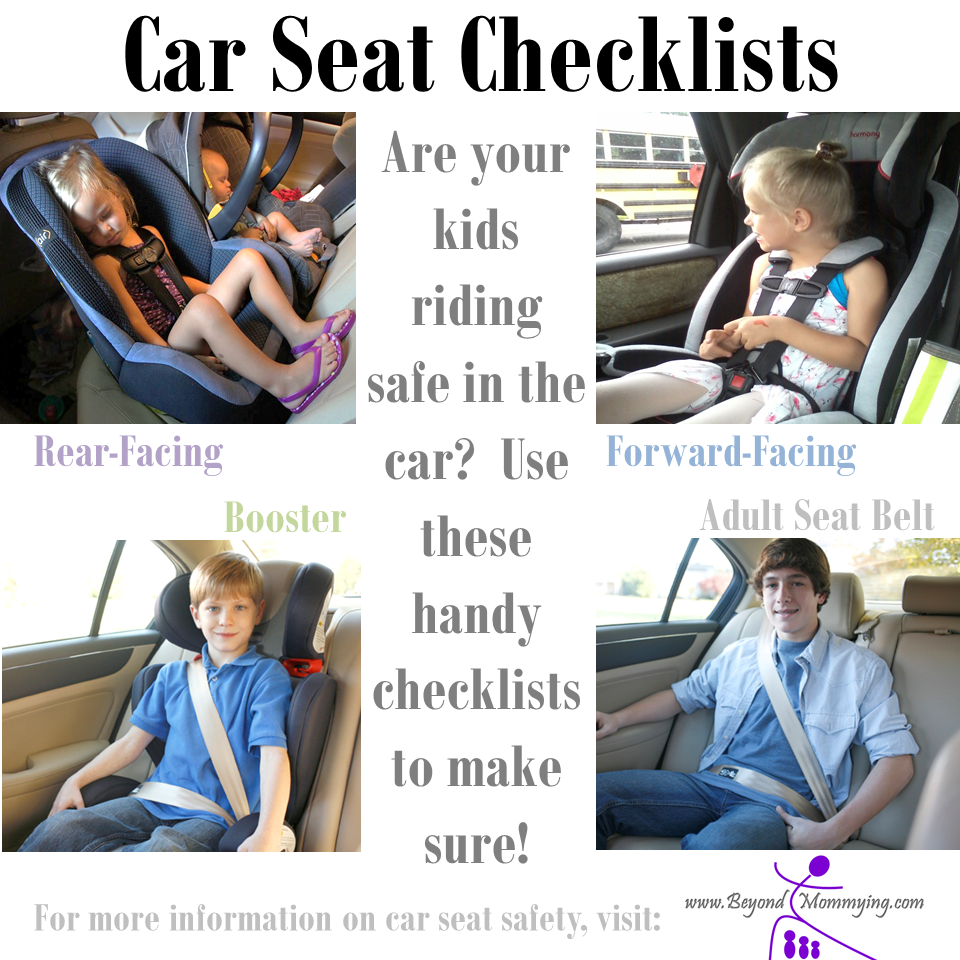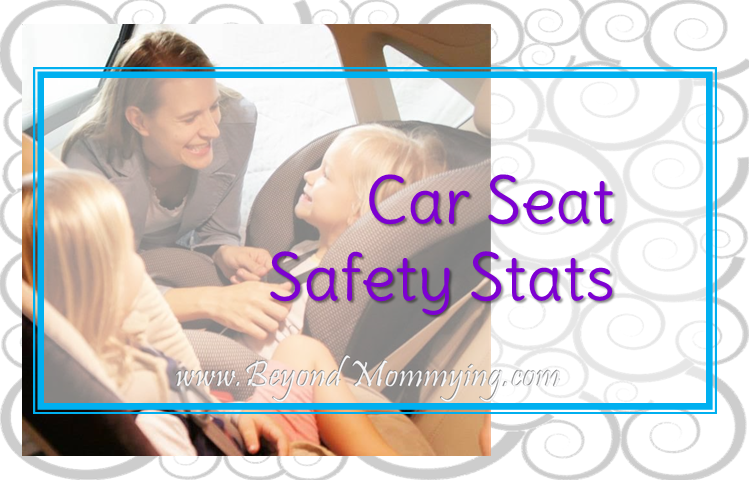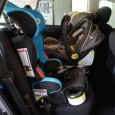When picking a new car seat for your child, first start by deciding which type of seat you need:
- Children under the age of 2 should only be in a rear-facing seat
- All children under the age of 4 should be in a rear-facing seat if there is one available that fits your child and is in your price range
- Children should be in a harnessed seat until they are at least 5-6 years old and able to sit properly in a booster seat every time they ride in the car for the entire duration of the ride
- All children under 4’9” should use a belt positioning booster
(An unrelated note: all children should ride in the back seat until they are at least 13 years old and have hit puberty. Until then, despite their height and weight, their skeletons are not strong enough to withstand the impact of a front airbag)
Here is a chart of the options available for each mode of seat use:
|
Rear Facing |
Forward Facing Harnessed |
Belt Positioning Booster |
|
| Infant Carrier |
x |
||
| Convertible |
x |
x |
|
| 3-in-1 or All-in-1* |
x |
x |
x |
| Combination |
x |
x |
|
| Booster |
x |
*Some Combination seats are labeled as a “3-in-1” if they can be used as a forward facing harnessed seat, high back booster and low back booster and cannot be used rear facing. Most 3-in-1 or All-in-1 seats that rear face, forward face and booster provide a terrible seat belt fit when used in booster mode.
Once you decide which type of seat you need, it’s time to start researching your options:
- Decide what your budget is and look at all seats that are available around your budget. Seats can often be found on sale and baby stores often do 20% off coupons so if you have time to wait, looking a little over your budget is a good idea.
- Look at the limits of use for the seats that are in your budget.
- Make sure your child is big enough to use the seat in the mode you want to use it in (all seats have minimum height, weight and age requirements for forward facing and booster use and even some rear facing seats have minimums for use).
- Make sure your child has room to grow. If your child is taller than average, choose a seat with higher height limits in the mode you plan to use. Likewise, if you child is heavier then choose a seat with higher weight limits. No seat has a maximum age limit so use the seat in safest mode until the seat is outgrown.
- Look at the features of the seats that are a good fit for your child and budget. All seats meet the same safety standards but some seats provide more “extras” such as infant inserts, belt lock offs, strap covers and some are designed to be easier to install.
When you’ve found a few favorites, head to the store to try them out:
- Sit your child in each seat to see how they fit.
- If your child will be rear-facing, make sure their shoulders are at or above the bottom harness slot, if not choose another seat or wait until they grow more.
- If your child will be forward facing in a harnessed seat, make sure their shoulders are below the top harness slot. I recommend buying a seat where the child’s shoulders are below the 2nd or 3rd slots from the top in order to have room to grow.
- If your child will be in a high back booster, make sure the shoulder belt guide is not below their shoulder.
- Also make sure your child is comfortable in the seat.
- Try the seats in your vehicle. (Many Babies ‘R’ Us and Buy Buy Baby stores provide this service).
- Make sure the seat will fit in the seating location you intend to put it in. Most rear facing seats are not allowed to touch the front seats and if doing side-by-side seats, you must be able to install all seats independently tight (this means if you take out a seat, the others remain properly installed without having to make adjustments).
- Try to install it to make sure it works in your car and you are comfortable with the way it installs.
When you’ve found “the one,” look for a good price:
- Research prices online. Sometimes the same seat will be cheaper online than at the store but many larger stores offer the option to order online and pick up in the store, sometimes on the same day.
- Look for coupons. Many retailers including Babies ‘R’ Us, Buy Buy Baby, Kohl’s and Diapers.com offer 20% coupons which can be used on car seats.
- Many stores price match so if you find the seat you want cheaper online, show your local store the price and see if they will match it. Some stores will also take competitor coupons.
- When buying a seat on clearance (or at a price that seems too good to be true), check the date of manufacture (the date should be clearly marked on the outside of the box). Many retailers discount seats that have older manufature dates. Make sure the price you pay reflects the age of the seat. If you pay full price, expect a seat that was manufactured in the previous 6-9 months. If buying a seat with an older manufacture date, look at how long the seat is good for and expect to get the following discounts:
| Manufactured | Seat is good for: | ||||
| 5 years | 6 years | 8 years | 10 years | ||
| 1 year ago | 20% | 15% | 12% | 10% | |
| 2 years ago | 40% | 33% | 25% | 20% | |
| 3 years ago | 60% | 50% | 35% | 30% | |
When you buy or receive a new car seat, inspect it to make sure it is new and in good condition:
- Check the box for damage
- A new seat should come in a properly sealed box, this usually means the box is glued shut.
- Look over the seat for signs of visible damage (especially in areas where there was damage to the box, if any)
- If the box appears to have been opened, the seat is probably unused if:
- The seat is in a plastic bag
- An informational tag of some kind is attached to the harness straps.
(An important note: some seats come in a plastic zippered bag rather than a box; this is perfectly fine as long as the tags are still attached.)
You’re ready for installation!
- Read through the manual, front to back, word for word, more than once if necessary to make sure you understand how to properly use the seat
- Following the directions in the manual, adjust the seat to fit your child by placing the harness straps and crotch buckle in the appropriate slots and the headrest (if movable) in the correct position.
- Following the directions in the manual, install the seat in your car and you’re ready to go!
Want more information on properly fitting and installing your child’s seat? see:








